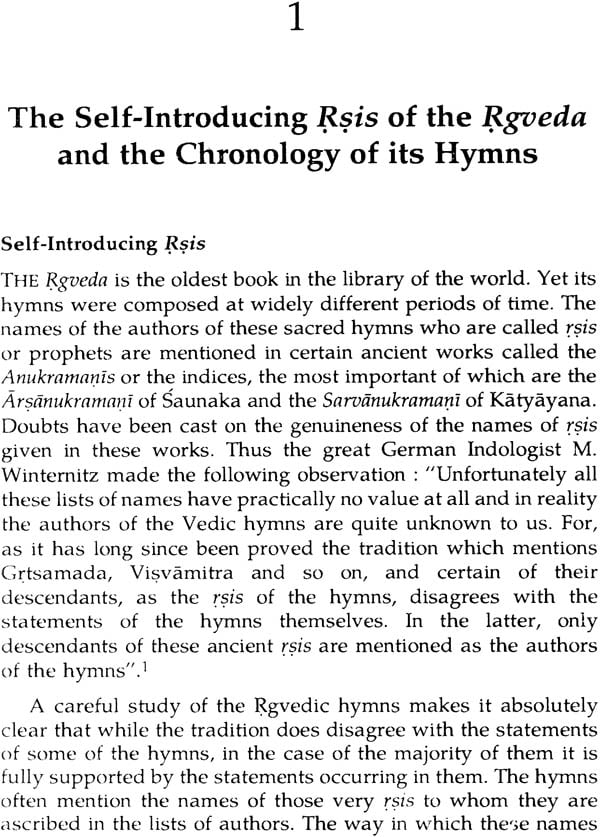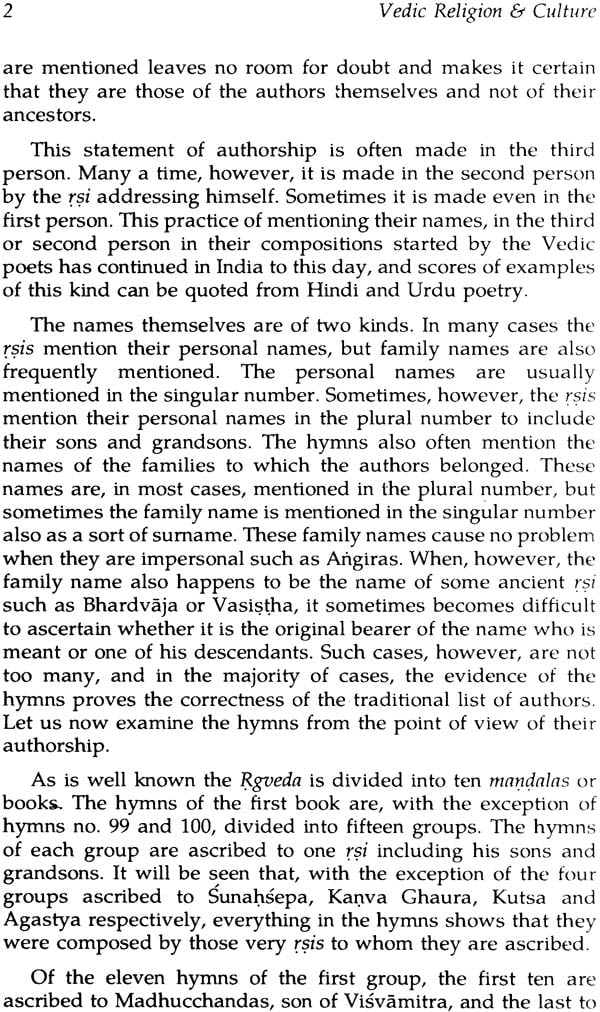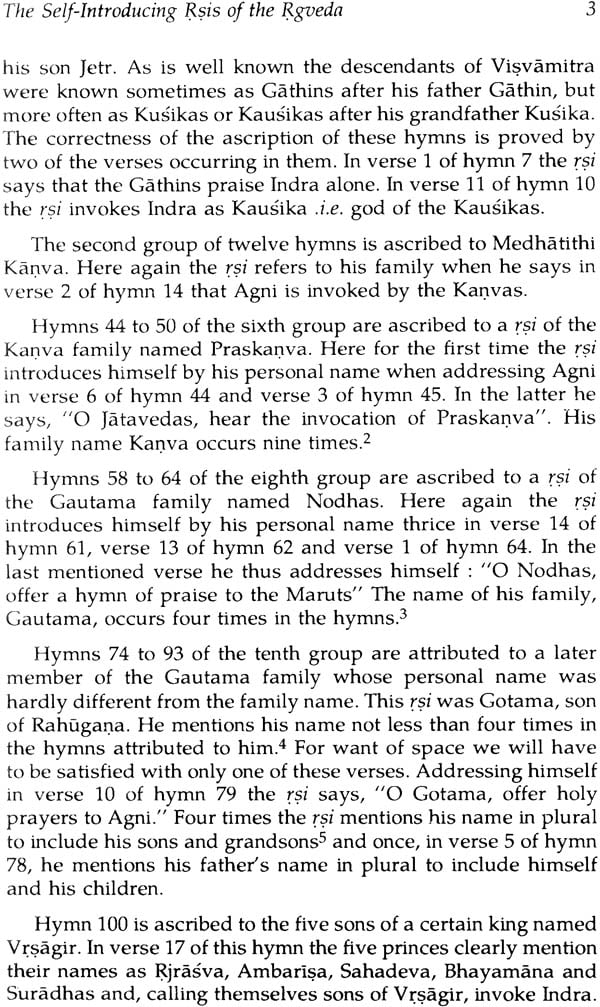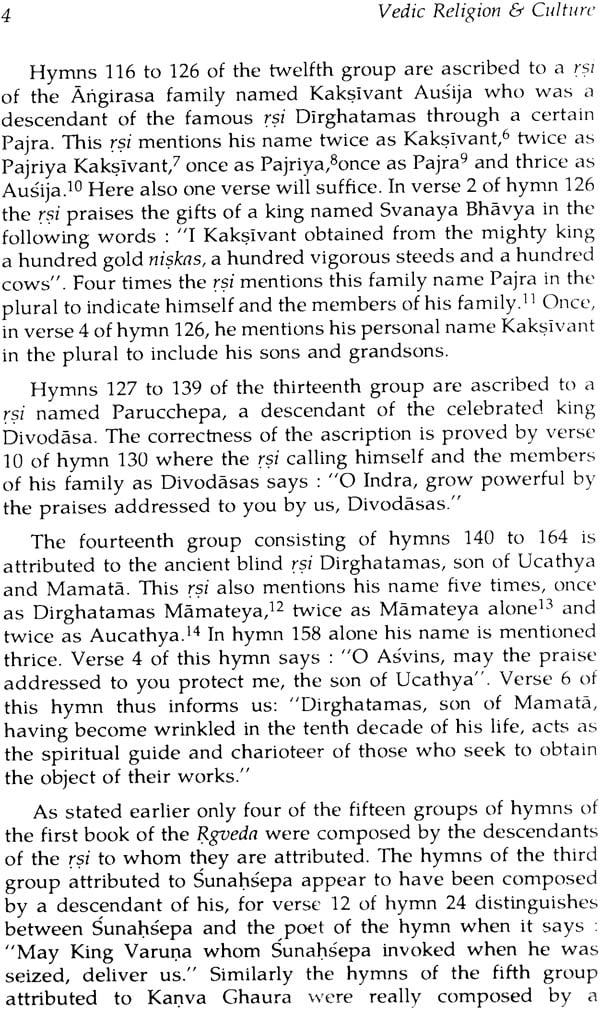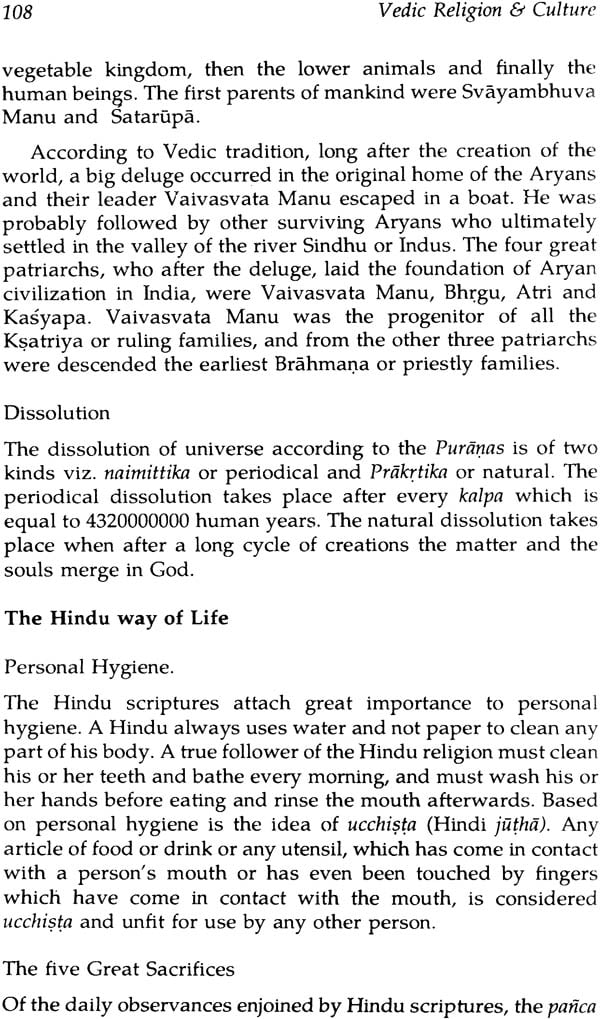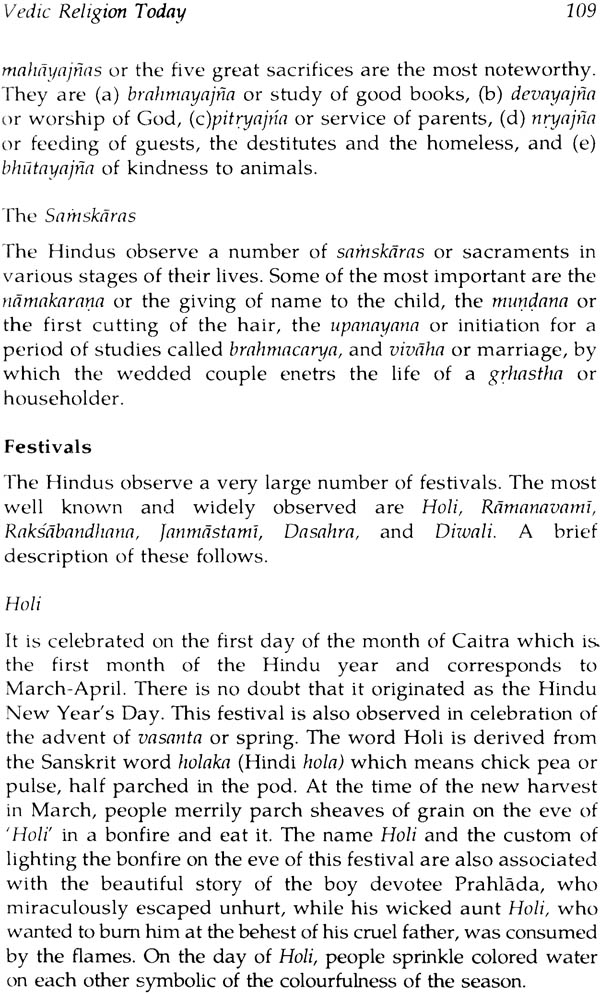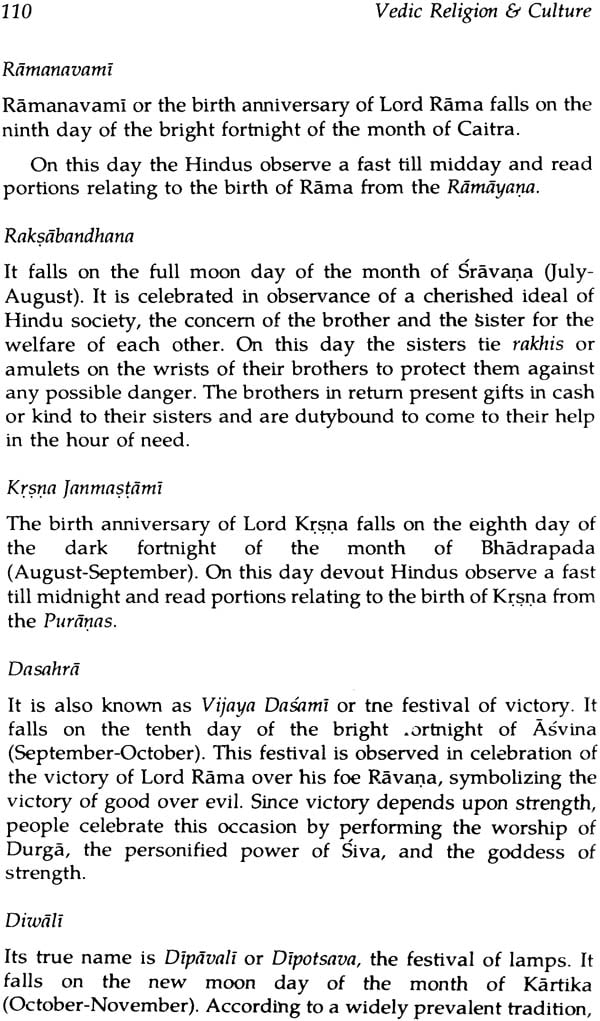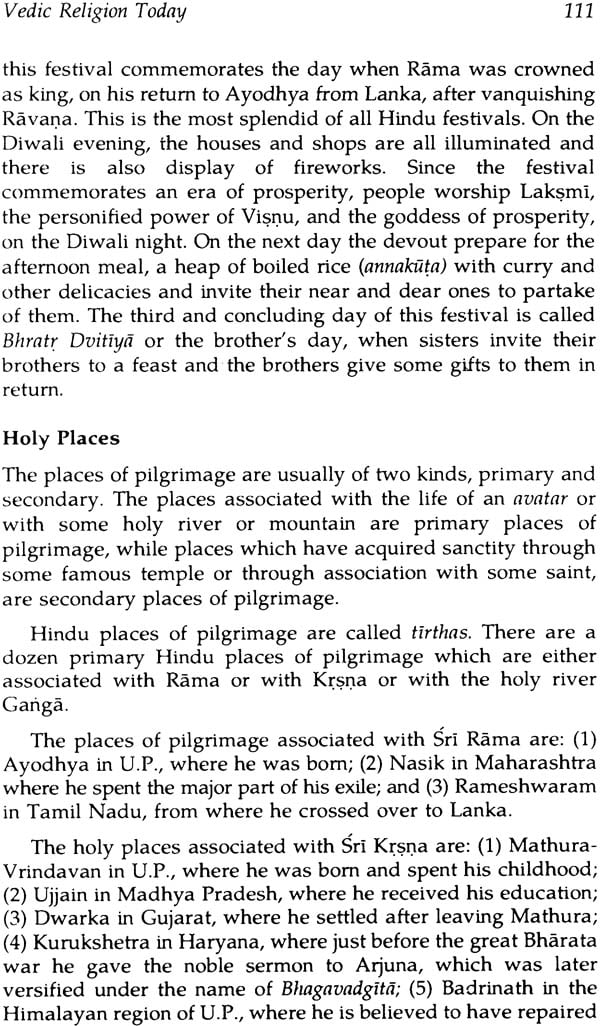
Vedic Religion and Culture
Book Specification
| Item Code: | NAC558 |
| Author: | P.L. Bhargava |
| Publisher: | D. K. Printworld Pvt. Ltd. |
| Language: | English |
| Edition: | 2008 |
| ISBN: | 8124604479 |
| Pages: | 130 |
| Cover: | HARDCOVER |
| Other Details | 8.5 Inch X 5.5 Inch |
| Weight | 180 gm |
Book Description
Vedic writings, despite two centuries of critical studies in India and the Western world, have unveiled myriad questions that have either baffled scholars or have led to serious controversies like — Who wrote the 1gvedic hymns? Which deities in the Rgveda, constitute the group called Adityas? Who of the two major Vedic gods, Indra or Varuna, has greater antiquity? Is Ayodhya the birthplace of Lord Rama? and so on. A distinguished Indologist, Prof. P.L. Bhargava marshals, for the first time, indisputable evidences to resolve some of these questions. Combining in him the erudition of a Sanskritist and a historian, the author mentions God’s omnipresence in Aryan religious thought, the enigmatic “Hymn of Visvedevas” in the 1gveda; besides several other issues of religious, cultural, historical and literary importance.
Invaluable to the scholars and specialists of Vedic lore.
Dr P.L Bhargava, an eminent historian and an Indologist, retired as Professor and Head of the Sanskrit Department, University of Rajasthan, Jaipur. He had been at the McMaster University Hamilton, Ontario (Canada), for about two years (1974-76) as a Visiting Professor of Religion. His PhD thesis entitled: India in the Vedic Age, was hailed all over. A recipient of the President’s Award for “Eminent Sanskritist” (1994-95), Prof. Bhargava has published eight books and over 60 research papers.
THE Vedic literature is the fountain-head of all facets of the rich and ancient civiliation of India including her literature and art, her religion and philosophy, her political ideas and social ideals, her history and archaeology and of all the rest that gives her an identity of her own. Much research has been done in the last two centuries by both Indian and Western scholars to unravel the hidden treasures of this literature. There are, however, still many problems which a serious student of this literature has to encounter. Some of these are who were the authors of the Rgvedic hymns? What is the meaning of the word asura in the Rgveda? Who are the members of the group of deities called the Adityas in the Rgveda? Which of the two great Vedic deities, Indra and Varuna, is older? Where did the kings of the Iksvaku dynasty originally rule? Do the “praises of gifts” of the 1gveda contain any historical information? Does the name of Ayodhya occur in early Vedic literature? Luckily a critical but objective study of the Vedic literature, free of preconceived notions, does not fail to yield the correct answers to these questions.
As a student of the Vedic literature in general and the 1gveda in particular, I came across all these questions and sought their answers. Consequently I wrote a number of articles which were published in different Indological journals of India and abroad. I have chosen thirteen of these articles to which I have added two of my unpublished essays (“Some Problematic Words and Phrases in the Hymn of Creation” and “Vedic Religion Today”) to form the fifteen chapters of this book.
Of the fifteen chapters of this book, the first eleven are clearly connected with the Rgveda and the later Vedas. The last four, however, need explanation for their inclusion in a book dealing with Vedic literature, religion, history and culture. The Nirukta of Yaska and the Astadhyayi of Pai3ini are no doubt works of post-Vedic Classical Sanskrit period. They are, however, regarded as Vedangas i.e. limbs or auxiliary sciences of the Veda. The Nirukta Is in fact the earliest commentary on the hyms of the Rgveda, and the Astadhyayi gives rules for Vedic as well as classical Sanskrit. As such the inclusion of the article entitled “Yaska and Panini” in this book as its twelfth chapter is not unjustified. The two articles forming the thirteenth and fourteenth chapters of this book deal with the Bhagavadgita which too is a post-Vedic work. Yet it is expressly called an Upanisad and its teachings are believed to contain the gist of the Upanisadic thought. The article forming the last chapter of this book has been included in it with the object of demonstrating that the Hindu religion of today is a lineal descendant of the religion of the Vedas.
I hope this book will be found useful by the students of Vedic lore. The credit for making it available to all those who are interested in acquiring the knowledge of Indian civilization in general and of Vedic literature, religion arid culture in particular goes to the enterprising publishers M/s D.K. Printworld (P) Ltd., New Delhi.
| Preface | vii | |
| Acknowledgements | ix | |
| Abbreviations | xiii | |
| 1. The Self-Introducing Rsis of the Rgveda and the Chronology of its Hymns | 1 | |
| 2. The Word Asura in the Rgveda | 23 | |
| 3. The Adityas in the Rgveda | 35 | |
| 4. The Comparative Antiquity of Indra and Varuna | 39 | |
| 5. The Enigmatic Hymn of Visvedevas in the Rgveda | 43 | |
| 6. Some Problematic Worlds and Phrases in the Hymn of Creation | 47 | |
| 7. Origin of the Idea of Omnipresence of God in Aryan Religious Thought | 51 | |
| 8. Position and Status of Women in India in the Early Vedic Period | 57 | |
| 9. Historical Importance of the Danastutis of the Rgveda | 65 | |
| 10. The Original Home of the Iksvakus | 71 | |
| 11. Ayodhya in Early Vedic Literature | 77 | |
| 12. Yaska and Panini | 79 | |
| 13. Additions and Interpolations in the Bhagavadgita | 89 | |
| 14. Names and Epithets of Krsna in the Bhagavadgita | 95 | |
| 15. Vedic Religion Today | 99 | |
| Index | 113 |
